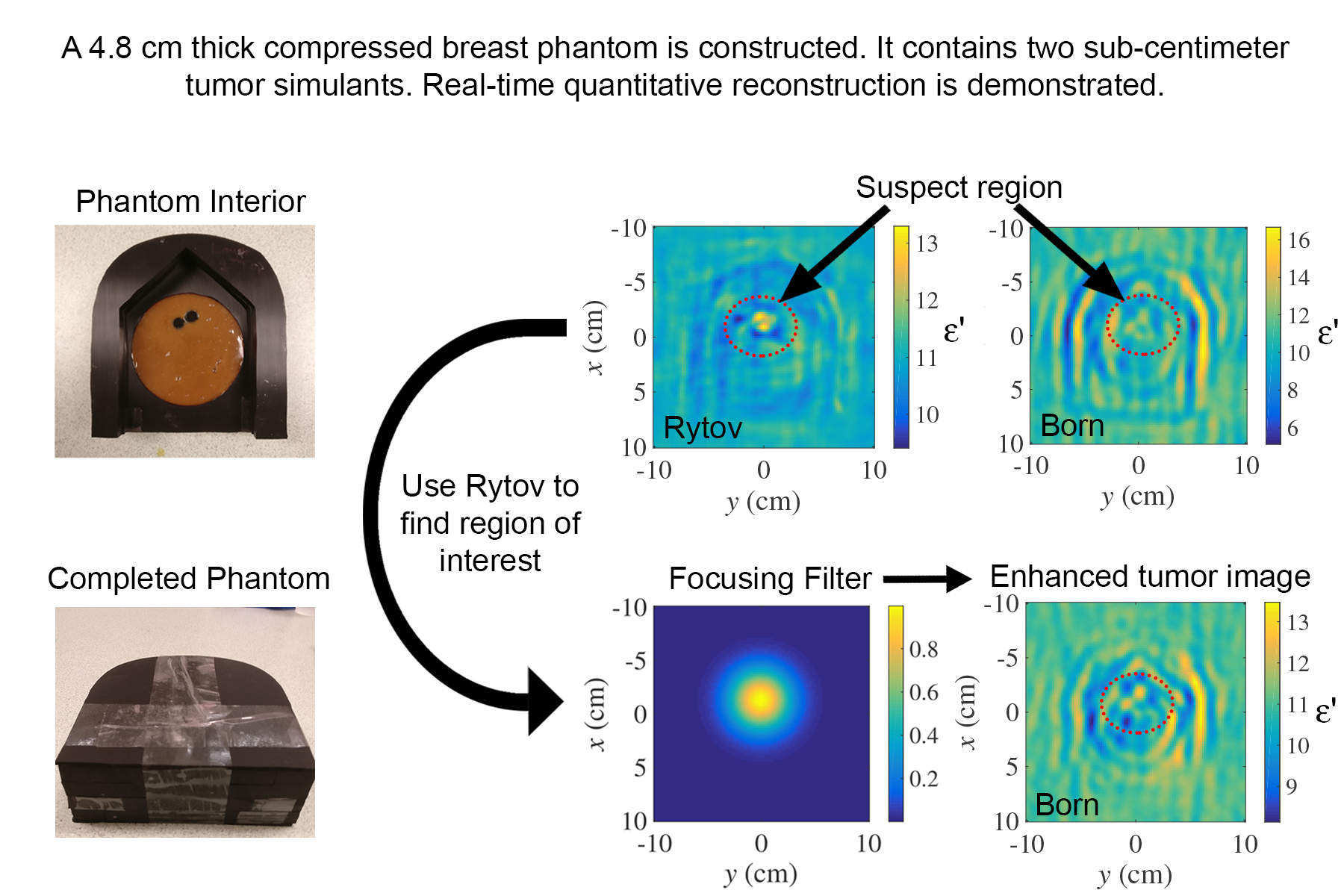Feature Article
Cancer Occurrences in Laboratory Rats from Exposure to RF and Microwave Radiation
James C. Lin
- This paper provides a critical and analytical synopsis and assessment of the current status of research on cancers in rats
exposed lifelong to RF and microwave radiation. - There were 18 carcinogenic and co-carcinogenic investigations in rats exposed to RF and microwave radiation
from a diverse range of mobile and wireless communication devices and systems. - A recent U.S. government announcement that rat cancer results from its large RF animal health risk study is
an important occurrence. - The impact of RF exposure on carcinogenesis remains tentative. The discrepancies continue to pose
uncertainty in assessing public health hazards from RF radiation. - The question of whether RF exposure from wireless and mobile devices and systems poses a health risk would
likely remain equivocal and controversial for some time to come.
Review on Advanced Short-Range Multimode Continuous-Wave Radar Architectures for Healthcare Applications
José-María Muñoz-Ferreras, Zhengyu Peng, Roberto Gómez-GarcíaChangzhi Li
- Short-range radars can be effectively applied in biomedical/healthcare environments, such as monitoring of
vital signs or detection of fall incidents of elderly at home. - Advanced short-range multi-mode radars have improved features for biomedical/healthcare applications.
Applications of advanced short-range multi-mode radars range from monitoring of vital signs to humanaware
localization scenarios. - The proposed hybridizations of the Doppler and frequency-modulated continuous-wave (FMCW) operation
modes leads to minimum-hardware radar architectures with advanced features for biomedical/healthcare
applications. - Theoretical analyses and simulations for the Doppler-plus-FMCW, multi-FMCW, and tone-ranging-inspired
radar architectures are provided
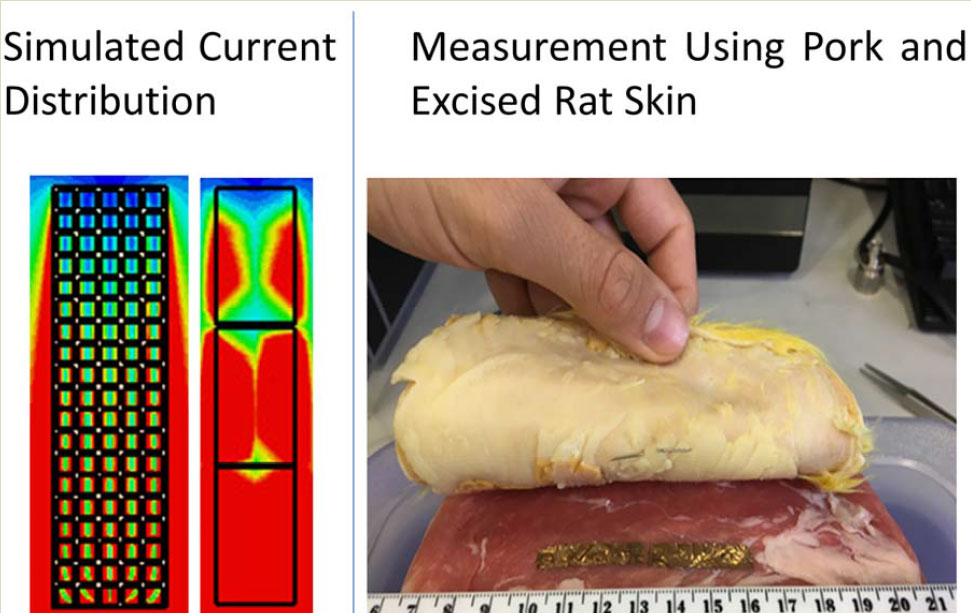
- Subdermal (tattoo) antennas made from gold nanoparticle ink may be used to create antennas at the body surface which could be used to re-radiate telemetry signals from a smaller, implantable device.
- Current research in polymer engineering is moving towards materials that can be injected as fluids that turn to soft, conductive solids at body temperature; this paper anticipates using these materials for tattooed subdermal antennas.
- Even with voids, typical of what would occur with a subdermal tattoo, the antennas can still be effective, as shown from comparing the current distributions for solid, mesh, and segmented strip dipoles
- Measurements confirm the feasibility of subdermal antennas.
2017 APS Special Issue
A Comparison of Solid, Mesh, and Segmented Strip Dipoles in a Subdermal Environment
Andrew Chrysler, Kaitlin L. Hall, Cynthia M. Furse.
Abstract:The objective of this paper is to evaluate the feasibility of subdermal (tattoo) antennas in the fat layer, which use the low conductivity of the fat to electrically insulate a dipole antenna.
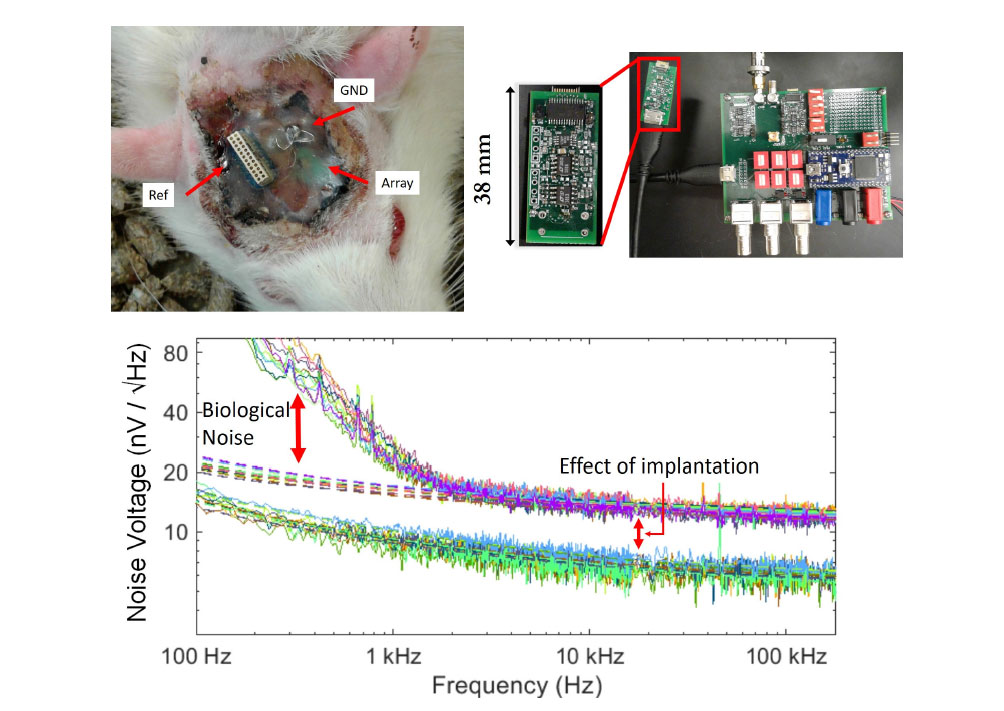
- This paper presents critical-path characterizations of implantable electrode arrays for next generation neural interfacing circuits, laying the foundation for fully implantable electrode characterization.
- Implantable electrode arrays have a substantial increase in noise and impedance when implanted with additional low-frequency biological noise unexplained by local cortical activity.
- These characterizations provide a foundation for advanced neural interfacing circuits that will require wideband noise and impedance characterizations currently unavailable in the literature.
- Detailed characterizations of the Tucker-Davis Technologies microwire array and the Utah electrode array have been presented, particularly for wide-band applications. Typical characterizations cite impedance only at 1 kHz, but this is not descriptive of the wide-band characteristics nor the low frequency noise and are thus insufficient for neural interfacing circuit design.
IEEE Sensors 2017 Special Issue
Impedance and Noise Characterizations of Utah and Microwire Electrode Arrays
Avery Tye Gardner, Hunter S. Stratham, David J. Warren, Ross M. Walker.
Abstract:This work presents an in-depth noise and impedance characterization of two of the most widely used microelectrode arrays
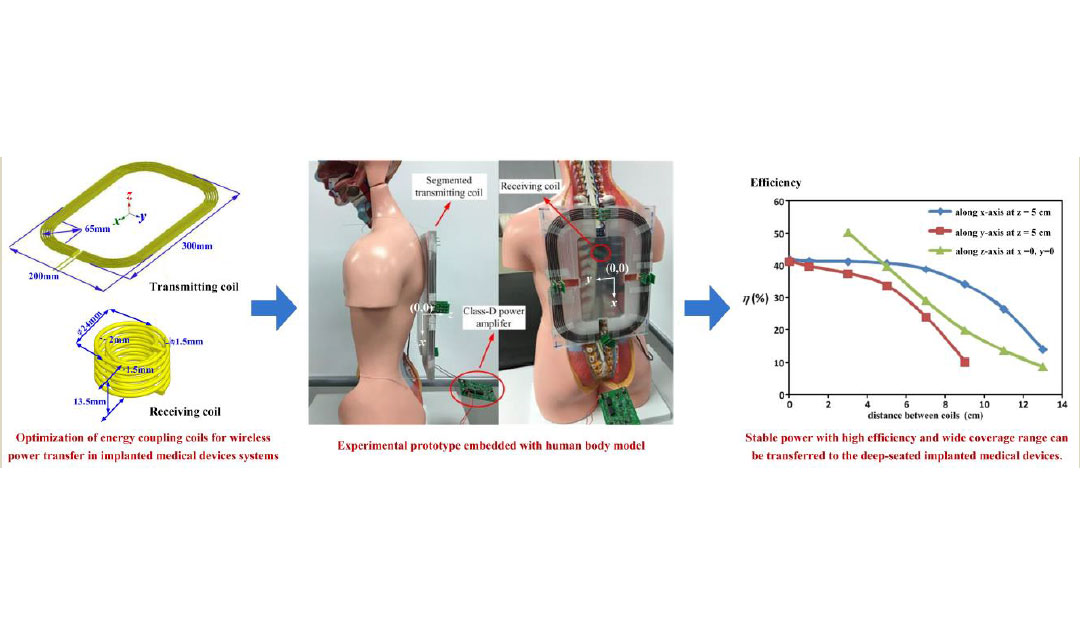
- High energy transfer efficiency and wide coverage range are desired to power implanted medical devices (IMDs) with wireless power transfer (WPT) systems.
- A 200 mm × 300 mm rounded rectangular transmitting coil and a double-layer circular receiving coil with an outer diameter of 24 mm have been optimized for a 2-coil IMD-WPT system.
- With the optimized coils, experimental results show that high energy efficiency higher than 40% can be achieved even the implanted receiver is located deep in the body with a wide coverage range of 18 cm × 10 cm.
2018 WPT Special Issue
Optimized Design of Coils for Wireless Power Transfer in Implanted Medical Devices
Yufeng Zeng, Dongyuan Qiu, Xiangtian Meng, Bo Zhang, Sai Chun Tang.
Abstract:Implanted medical device (IMD) wirelessly powered by magnetic resonant coupling has attracted wide attention recently.

- The developed numerical workflow is appropriate for evaluating power deposition and temperature rise on electrodes of a coax lead located in a homogeneous medium in appliances with ISO/TS 10974 Tier4.
- Small lead electromagnetic model uncertainty does not require that the spatial distribution of power deposition and temperature rise in close proximity to lead electrodes be independent on an incident electric field.
- Determination of the hot spots described in Clause #8 of ISO/TS 10974 Ed2 can depend on the end user’s selection of pathways, that is, variety of incident tangential electric field applied during investigation, the use of specific absorption rate or temperature rise quantities, as well as the duration of RF-induced heating when the approach based on temperature rise is used.
- The power injection approach based on the comparison of temperature increase along the lead tip electrode axis can result in substantial underestimation or overestimation of the power deposition around the lead tip electrode, as well as maximum temperature rise in close proximity to the tip electrode, ring electrode, or both.
2017 APS Special Issue
Lead Electromagnetic Model to Evaluate RF-Induced Heating of a Coax Lead: A Numerical Case Study at 128 MHz
Mikhail Kozlov, Wolfgang Kainz
Abstract:One of the major components of magnetic resonance imaging safety for patients with an active implantable medical device is the evaluation of in vivo radio frequency induced heating of tissue near a lead electrode, which can result in tissue damage.
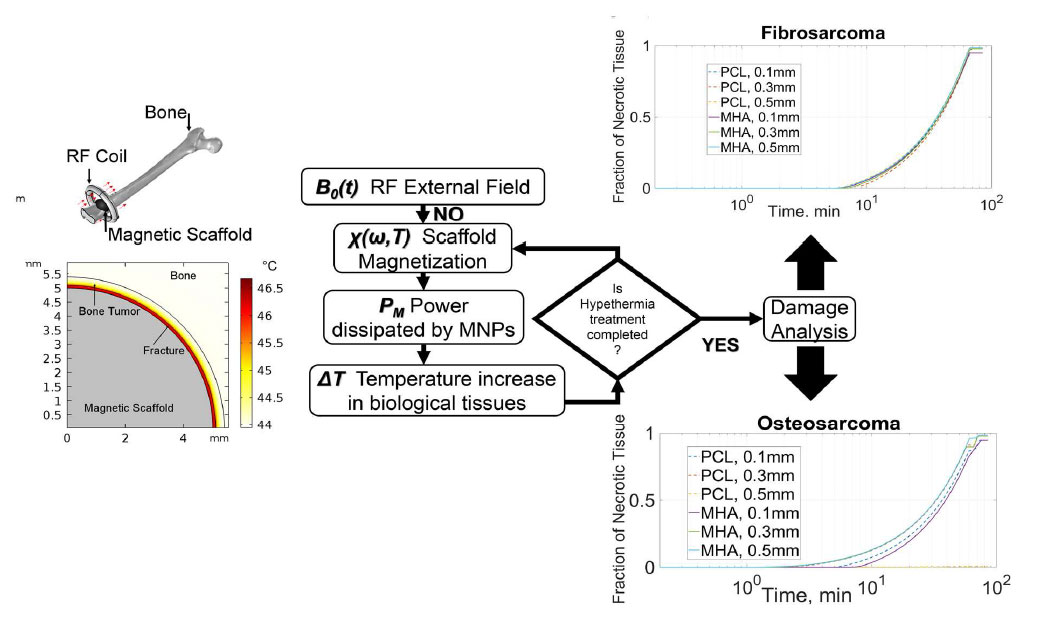
- Functionalization of bone scaffolds using magnetic nanoparticles allows hyperthermia of bone tumors in an effective way.
- The possibility of employing innovative magnetic scaffolds as therapeutic tool in orthopaedic oncology is analyzed via numerical simulations. Using a Cole-Cole model, non-linear material properties are evaluated to define external field parameter to perform an effective treatment for bone tumors such as Fibrosarcoma and Osteosarcomas.
- Accurate electromagnetic and thermal modeling of scaffolds and nanoparticles, in the whole range of involved temperature, is required to design effective and safe treatments.
- Different tumoral tissues and qualitative features such as the presence, size and type of surgical fracture, affect in a significant way the hyperthermia treatment.
2017 APS Special Issue
Numerical Investigation Of Bone Tumer Hyperthermia Treatment Using Magnetic Scaffolds
Alessandro Fanti, Matteo Bruno Bruno Lodi, Giuliano Vacca, Giuseppe Mazzarella.
Abstract:This works claims to define, via numerical simulations, magnetic field parameters to perform an effective in situ bone tumor hyperthermia treatment using magnetic scaffolds.
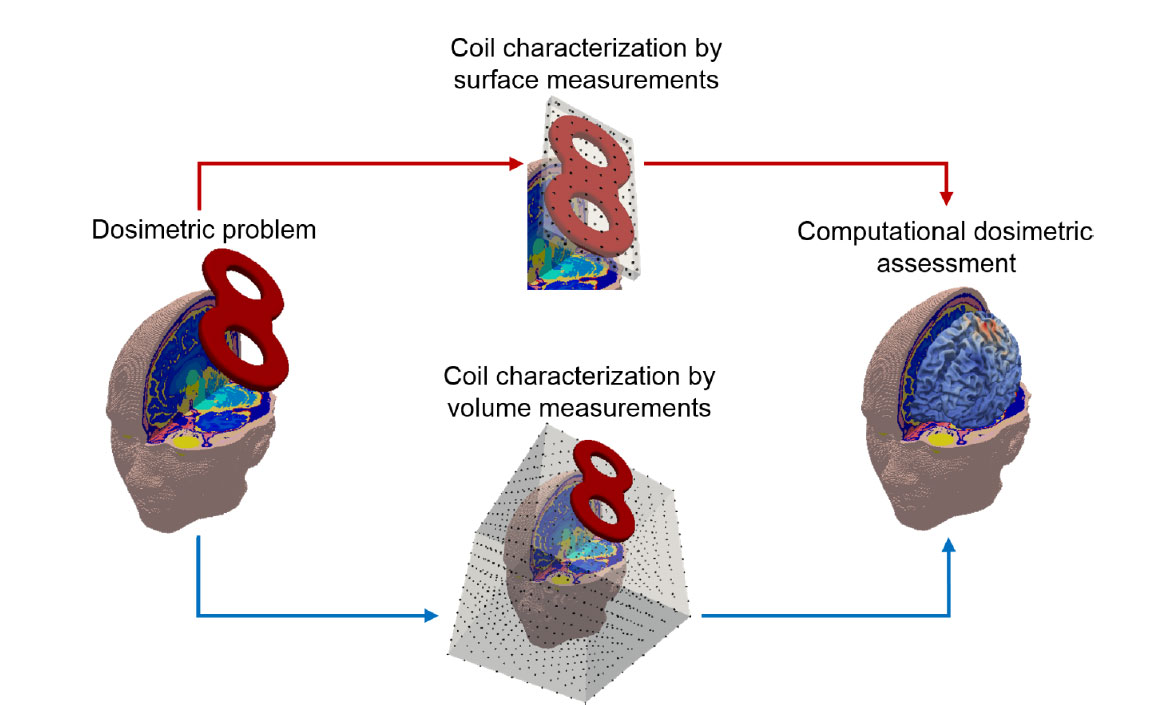
- We propose an experimental-computational technique for low frequency dosimetric assessments that reduces the experimental burden while maintaining accuracy and robustness.
- The proposed technique can be used when the magnetic source is unknown or not suitable to be modeled.
- By adopting surface measurements, the proposed technique allows to characterize any low frequency magnetic source in a very convenient way.
- By adopting the boundary element method for extrapolating surface measurements as well as a curl inversion operator for magnetic vector potential evaluation, the proposed technique significantly reduces the noise from the input data.
- The positive features of the proposed technique have been put in evidence by testing it in a transcranial magnetic stimulation dosimetric application.
2017 APS Special Issue
Computational Low Frequency Electromagnetic Dosimetry Based on Magnetic Field Measurements
Alessandro Arduino, Oriano Bottauscio, Mario Chiampi, Ilkka Laakso, Luca Zilberti.
Abstract:This paper compares different experimental-computational strategies for the estimation of electric fields induced in human bodies by low frequency magnetic sources
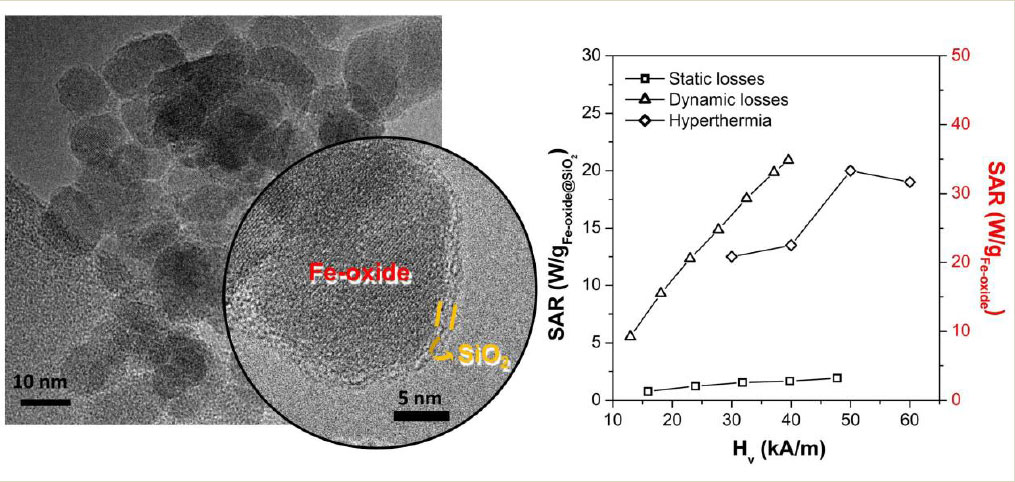
- Core@shell Fe-oxide@SiO2 nanoparticles: a system for delivering heat selectively to cancer cells through an alternating electromagnetic field. This study provides a critical, anatomy-informed dielectric study of the properties of the bladder.
- The most effective heat transfer is obtained through a maximisation of the energy losses: a careful investigation of the nanoparticles system is required to comply with the constraints imposed by hyperthermia applications.
- An almost superparamagnetic system that minimises magnetostatic interactions (e.g. agglomeration) while keeping dynamic hysteresis losses for heat delivery.
2018 AIM Special Issue
Magnetic and Thermal Characterization of Core-Shell Fe-oxide@SiO2 Nanoparticles for Hyperthermia Applications
Gabriele Barrera, Marco Coïsson, Federica Celegato, Elena Sonia Olivetti, Luca Martino, Ivana Miletto, Paola Tiberto.
Abstract:Nanoparticles for magnetic hyperthermia pose significant constraints in their size and composition to ensure cellular uptake and biocompatibility,
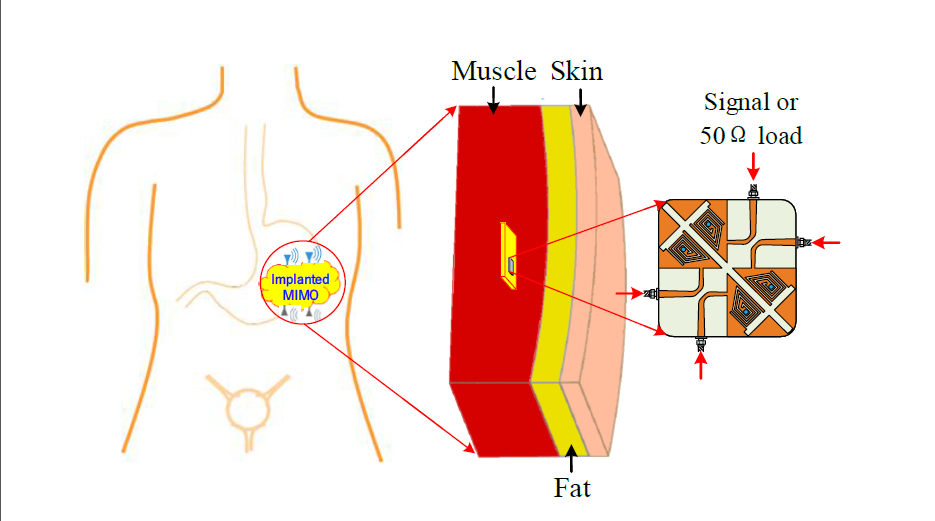
- In MIMO wireless systems, multiple antenna elements are adopted to work as transmitter and receiver to improve capacity such as the enhancement in the data transmission rates of high resolution images from the capsule to outside base station/gateway.
- The proposed four-element implantable MIMO antenna features a wide impedance bandwidth of 18.64% (2.14–2.58 GHz) with a maximum gain of –15.18 dBi, and has the compact dimensions of 18.5 mm × 18.5 mm × 1.27 mm. The mutual coupling between different antenna elements is less than –15.99 dB.
- The ex-vivo measured results illustrate a merit agreement with the simulated ones in a three-layer phantom. The radiation characteristic of the designed antenna follows the healthy protection standards, and the performance of diversity and far-field link budget indicates merit channels characteristics.
2017 APS Special Issue
A Miniaturized Four-Element MIMO Antenna with EBG for Implantable Medical Devices
Yi Fan, JinHong Huang, TianHai Chang, Xiongying Liu.
Abstract:A miniaturized four-element multiple-input-multiple-output (MIMO) antenna operating in the band of In-dustrial, Scientific, and Medical (ISM) 2.4-2.48 GHz, is investigated to supply sufficient transmission rate and fight against multipath fading.
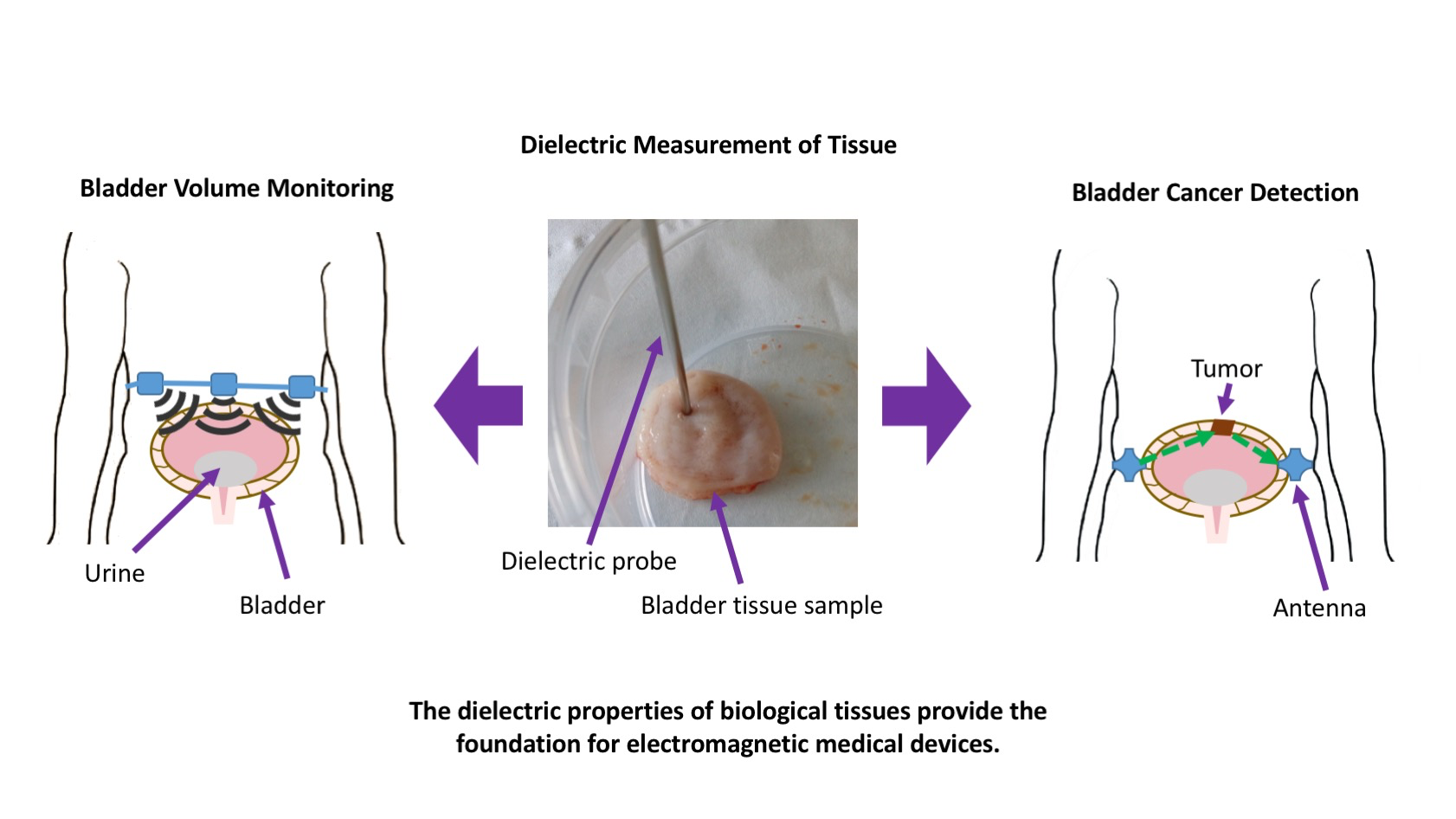
- Accurate knowledge of the dielectric properties of tissues is the basis for electromagnetic (EM) medical device design, development, and optimisation, and therefore, lack of knowledge on the dielectric properties of the bladder is a stumbling block for the application of bladder-related technologies, including EM therapeutic and diagnostic tools.
- This study provides a critical, anatomy-informed dielectric study of the properties of the bladder.
- Through a large number of tissue measurements, this study examines for the first time the impact of the dielectric properties of the bladder in light of common measurement confounders (time from excision, temperature), and uniquely examines the properties of both the inside and the outside of the bladder wall.
- This study provides reliable dielectric data of the bladder over the microwave frequency range, and fitted dielectric models, that can be used to support the design of bladder-related medical technologies.
- This study has been performed in line with modern best practices standards for the reporting of experimental metadata along with experimental data, and the data and metadata will be made openly available online.
2018 original research paper
Characterisation of the Dielectric Properties of the Bladder over the Microwave Range
Emily Porter, Saqib Salahuddin, Alessandra La Gioia, Adnan Elahi, Atif Shahzad, Arun Kumar, David Kilroy, M. O’Halloran,
Abstract:The dielectric properties of tissues characterise the interaction of electromagnetic fields with the body. Accurate knowledge of these properties facilitates the design of effective electromagnetic-based
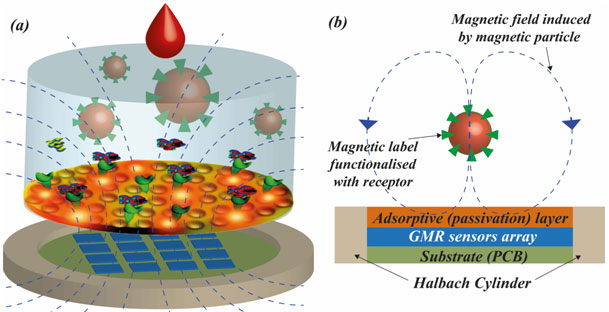
- This paper presents the design and the implementation of an on-chip magnetoresistive sensors array for cell detection and localisation. Giant magnetoresistance (GMR) sensors have been used due to their high sensitivity and resolution.
- A novel calibration and localisation algorithm has been coded and implemented. In order to generate the required homogenous magnetic field, a custom 3D printed Hallbach cylinder has been simulated and characterised.
- Sensory chips could detect an average magnetic sensitivity of 2 V/T at room temperature.
- The ferrofluid and a customised 3D printed Halbach cylinder were employed to simulate the magnetic field change in the cell.
- The implemented algorithm helps in achieving high sensitivity and positioning speed, also thanks to an accurate calibration of the GMR sensors.
2017 IEEE Sensors Special Issue
Magnetoresistive Biosensors for On-Chip Detection and Localisation of Paramagnetic Particles
Zhaochen Yin, Edoardo Bonizzoni, Hadi Heidari
Abstract:This paper presents the design and the implementation of an on-chip magnetoresistive sensors array for cell detection and localisation.

- An insulated cable implanted in a lossy material and submitted to a radiated radiofrequency field can be modeled by a modified transmission line with a distributed excitation along the line.
- This model gives a better physical insight into the problem of the compatibility of implanted cables in Magnetic Resonance Imaging (MRI) such as pacemaker, defibrillator or neurostimulator leads.
- This work shows the equivalence between the transfer function model usually used to model the interaction of an implanted lead with the radiofrequency field of MRI and the modified transmission line model.
- An idea that can be derived from this model is to reduce the heating at the electrode of an implanted lead by creating a big reflection coefficient before the end of the lead using a multi-section approach
2018 Original Research Paper
Transmission Line Model Of An Implemented Insulated Cable For Magnetic Resonance Imaging Radiofrequency Hazard Evaluation
Alexia Missoffe, Julie Kabil, IADI, Pierre-Andre Vuissoz, Jacques Felblinger
Abstract:This work demonstrates that one can model the power deposited at the electrode of an implanted insulated cable submitted to the radiofrequency field of a 1.5 T Magnetic Resonance Imaging modality (64MHz) with a transmission line model.
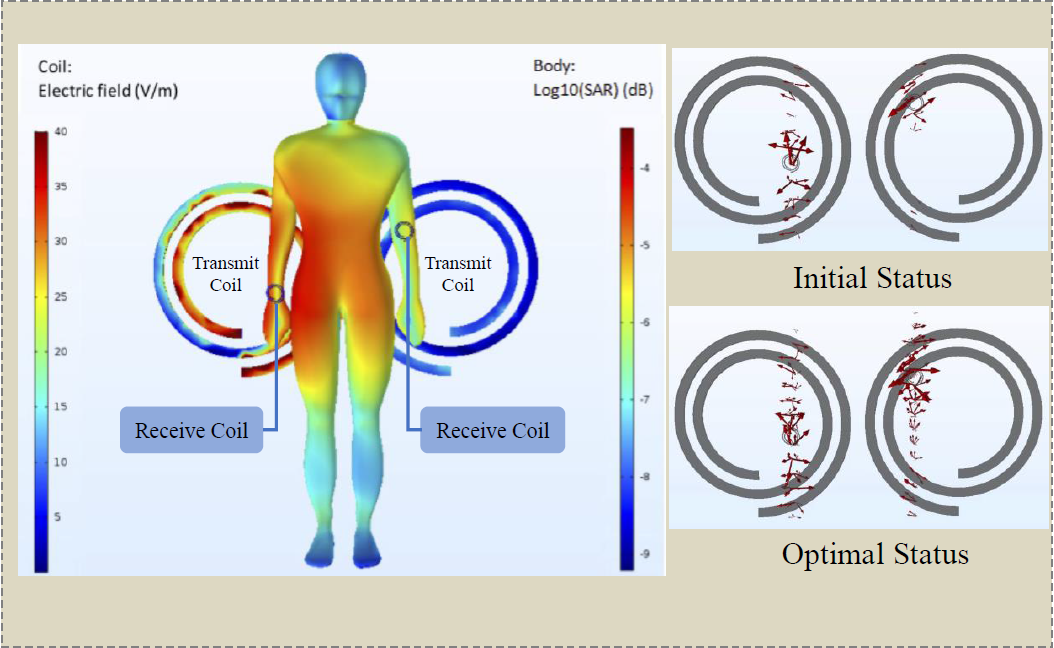
- This paper proposes a 2×2 magnetic resonance charging system considering both magnetic transmit beamforming and receive beamforming for charging wearable medical devices.
- Both numerical results and simulation results in COMSOL model are provided to demonstrate the effectiveness of the proposed system and optimization algorithm.
- The target medical applications are wearable medical devices using for Alzheimer’s disease, ergonomics, rehabilitation and neurology which are inconvenient or sometimes infeasible to replace or change batteries for the elderly or patients.
- Such a magnetic resonance charging system provides a promising way to make wearable medical devices permanently unplugged.
2018 Original Research Paper
Magnetic Transceiver Beamforming for A 2 × 2 Magnetic Resonance Charging System
Xiaoqing Liu, Bingqing Mei, Xiaodong Wang, Zhigang Wen
Abstract:In this paper, we consider a magnetic resonance charging system consisting of two transmit coils and two receive coils that is designed to wirelessly charge
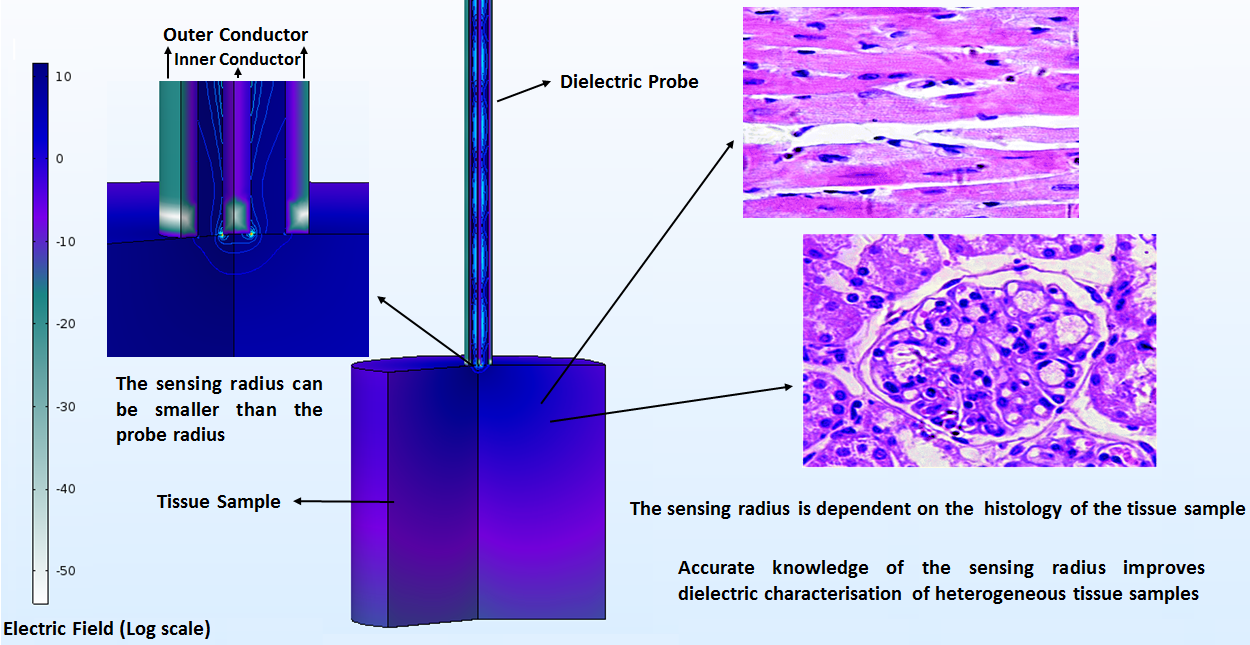
- This work analyses the sensing radius of a coaxial probe for accurate dielectric characterisation of heterogeneous tissues.
- The probe sensing radius can be smaller than the probe radius and depends on the histology of the tissue sample.
- Accurate knowledge of the sensing radius has the potential for improving the design of novel microwave imaging devices and hyperthermia systems.
- This work demonstrates that a lack of knowledge of the probe sensing radius leads to errors in the interpretation of dielectric data acquired from heterogeneous tissues, and thereby to inaccurate medical device design.
- Despite the assumption made in previous dielectric studies, this work shows that the dielectric contribution of a particular tissue depends on both its location within the sensing volume and its dielectric properties.
IEEE APS Special Issue
Quantification of the Sensing Radius of a Coaxial Probe for Accurate Interpretation of Heterogeneous Tissue Dielectric Data
Alessandra La Gioia, Saqib Salahuddin, Martin O’Halloran, Emily Porter
Abstract:Accurate tissue dielectric measurements are crucial for the development of electromagnetic diagnostic and therapeutic devices that are designed based on estimates of the dielectric properties of diseased and healthy tissues.
IEEE APS Special Issue
Real-time Microwave Imaging of a Compressed Breast Phantom with Planar Scanning
Daniel Tajik, Farzad Foroutan, Denys S. Shumakov, Aaron D. Pitcher, Natalia K. Nikolova
Abstract:Two real-time reconstruction algorithms, quantitative microwave holography and scattered-power mapping, have been shown to be successful in the imaging of compressed tissue of
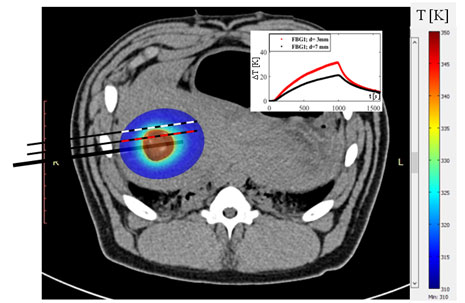
- What are the innovative features of using electromagnetics for biomedical applications in this manuscript (in one sentence)? The modulation of light reflected by optical gratings is used to measure temperature changes during laser ablation for cancer removal.
- What is the conclusion drawn in this manuscript (in one sentence)? Carbon fibers based on fiber Bragg gratings allow performing distributed temperature monitoring during image-guided laser ablation.
- What are the targeted biological and/or medical applications (in one sentence)? The medical application here presented is the laser ablation therapy for cancer removal in soft organs, e.g., liver.
- What is the significance/breakthrough of this study? This study brings useful tools for real-time monitoring of laser ablation effects.
- What are the accomplishments you would like to highlight in this manuscript to our readers (which are not mentioned above, in one sentence)? As confirmed by tests in the presented pre-clinical scenario, the proposed probe is suitable for temperature monitoring during CT-guided laser ablation, and no artifact is produced on the diagnostic images.
IEEE Sensors 2017 Special Issue
Solutions to improve the outcomes of thermal treatments in oncology: multi-point temperature monitoring
Emiliano Schena, Federico Davrieux, Paola Saccomandi, Daniele Tosi, Riccardo Gassino, Carlo Massaroni, Daniela Lo Presti, Guido Costamagna, Guido Perrone, Alberto Vallan, Michele Diana, Jacques Marescaux
Abstract:Over the last few decades, minimally invasive treatments have gathered a large interest as alternatives to surgical resection.

- The reported work utilizes an open-stub as the sensing element, demonstrates a fully integrated complex dielectric sensor in K-band frequencies and results in flexible DC output.
- The proposed sensor can be useful as a compact, label-free and low-power all-electrical sensing approach for relative dielectric sensing of biological and chemical materials with minimal invasion.
- It can offer continuous glucose monitoring, human body hydration sensing as implants or wearable device, also it can be useful as a lab-on-a-chip for DNA sequencing, malignant cell growth observation, cell cultivation monitoring etc.
- The sensor demonstrates complex permittivity within 3.7% accuracy for the real part and 4.3% for the imaginary part for dielectric chemical samples like methanol and ethanol.
IMBIOC 2017 Special Issue paper
A Fully Integrated Low-Power 30 GHz Complex Dielectric Sensor in a 0.25-μm BiCMOS Technology
Farabi Ibne Jamal, Subhajit Guha, Mohamed Eissa, Jan Wessel, Dietmar Kissinger
Abstract:This paper presents an integrated low-power dielectric sensor in K-band frequencies implemented in a 0.25 μm SiGe BiCMOS process including the sensing front-end and readout circuits.

- Invasive surgery is a problem for biomedical implants due to infection at the incision site and reactions to anesthesia.
- The use of stents embedded with electronics is an attractive alternative method for implanting minimally invasive biomedical devices via angiographic catheter delivery.
- The use of stents precludes batteries. Hence, wireless power transfer to the device is a requirement.
- This work employs inductive and capacitive coupling to demonstrate two different methods for transferring power to a stent-based biomedical device safely. The ideal power transfer method depends on the location of the implant.
- Such devices could be used to monitor biological indicators and vital signs such as blood pressure, blood glucose and even neural signals.
2018 Original Research Paper
Near Field Wireless Power Transfer to Stent-Based Biomedical Implants
Ammar Aldaoud, Jean-Michel Redoute, Kumaravelu Ganesan, David Garrett, Steven Prawer
Abstract:Safe wireless power transfer is an essential requirement for biomedical implants. Emerging technologies are becoming smaller, less invasive and consuming less power.
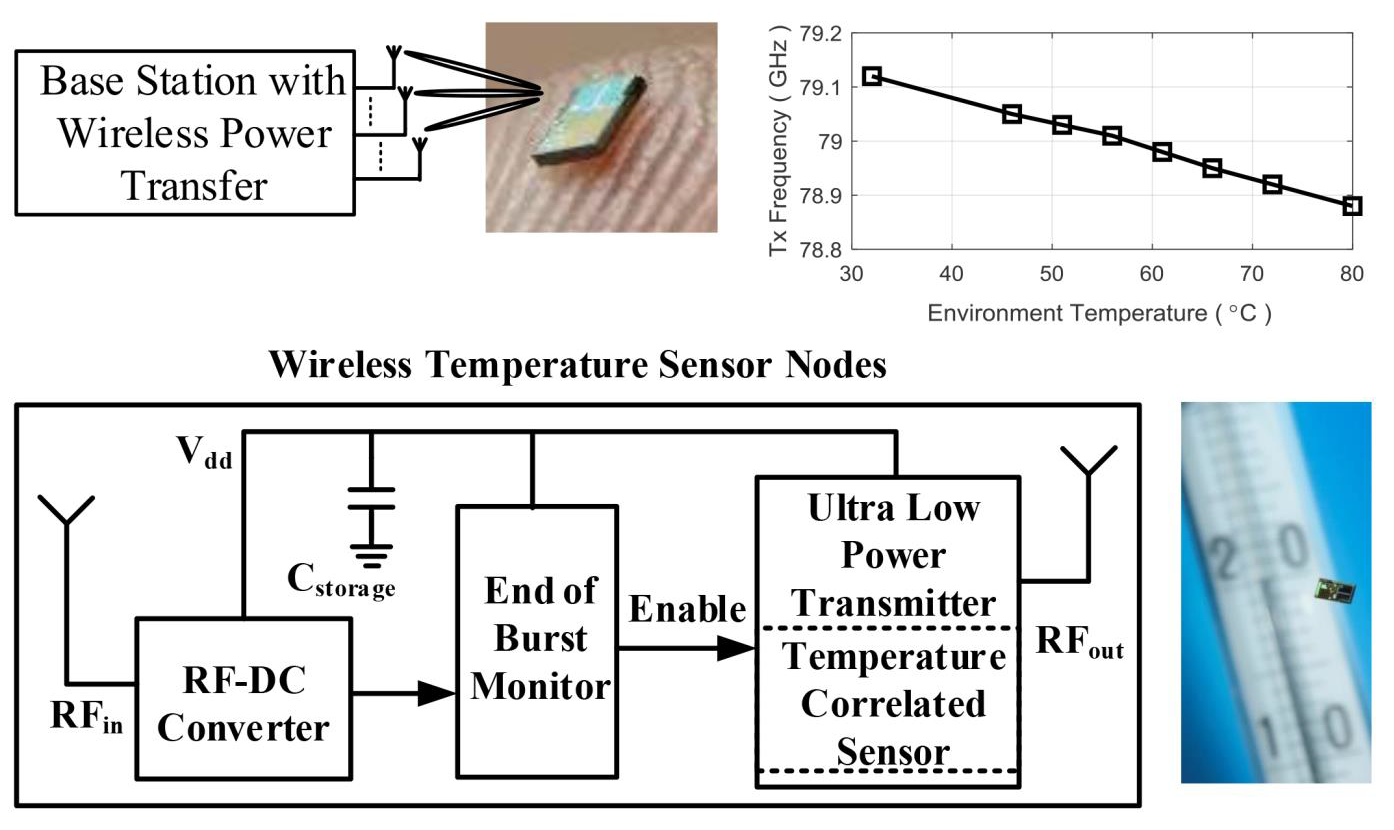
- In this paper, a low-cost super-tiny senor node with temperature sensing function is presented together with fully integrated mm-wave frequency wireless power transfer technique in 65 nm CMOS technology, which can increase temperature monitoring accuracy for a tiny location such as a solution for low-cost disposable skin sensor.
- In this paper, a mm2 sized, low cost and no battery sensor with temperature sensing is achieved in a 65 CMOS technology which can be applied in medical treatment.
- In this paper, the sensor node is targeted at the low-cost, low-sized, disposable sensing application in medical/biological.
- This paper presents an mm-wave wireless powered sensor node which is fully integrated in a CMOS technology, including on-chip antenna, on silicon mm-wave wireless power receiver, energy storage, energy monitoring, and a low power temperature sensing with a transmitter.
2018 WPT Special Issue
Power Reduced Monolithic Wireless Sensor
Hao Gao, Marion Matters, Peter Baltus
Abstract:Future wireless sensor networks require reliable, battery-less, miniaturized, low-cost sensor nodes with ultra-low-power consumption.
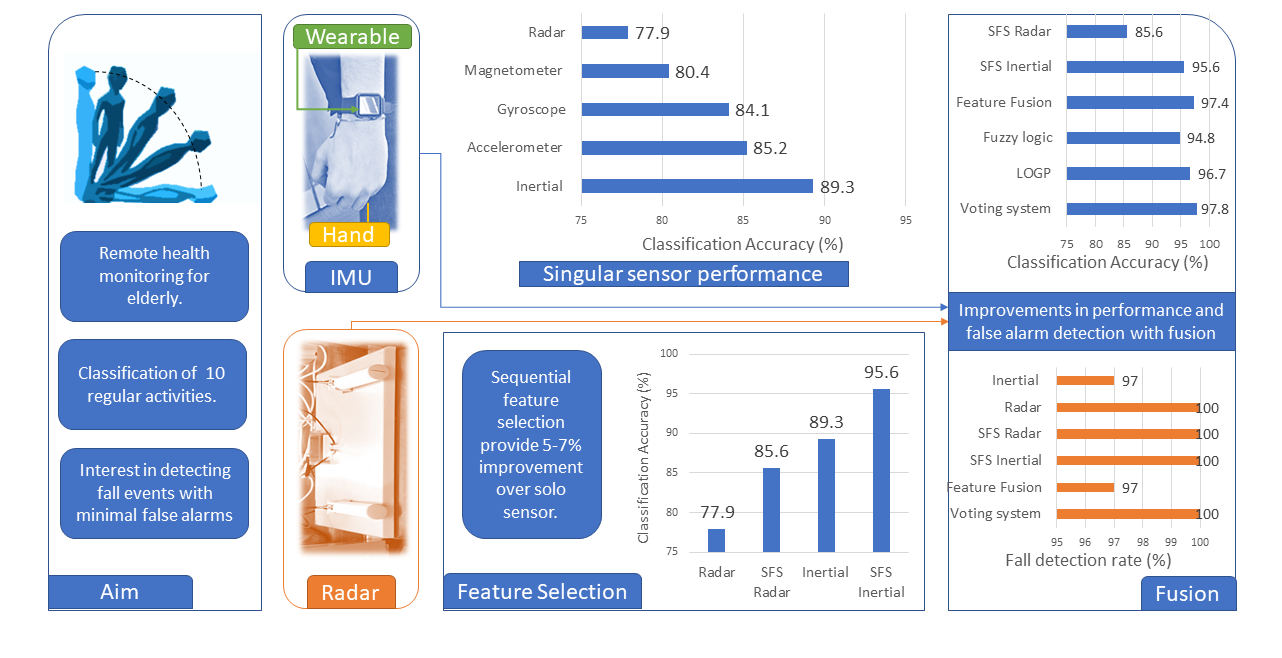
- We propose to combine radar and wearable sensors (accelerometer, gyroscope, and magnetometer) data to simultaneously improve human activities classification rates and minimise false alarms when detecting critical events such as falls.
- Feature selection and fusion methods, at both feature level and decision level, are tested on experimental data collected simultaneously using radar and wearable sensors.
- Sequential forward selection (SFS) significantly helps reduce the dimension of the feature subset and improve the classification accuracy.
- For the feature level fusion, we were able to increase the classification accuracy by 12.2% and 3.3%, compared to the use of radar and wearable sensors on their own.
- Decision level fusion also improves to 94.8% and 96.7% classification accuracy with Fuzzy logic-based decision making and LOGP soft fusion. A novel voting system was also proposed by combining two SVM and KNN classifiers trained by radar and inertial sensor independently. This is demonstrated to achieve 97.8% classification accuracy and 100% fall detection specificity for the 'fall event' class.
- Future work will explore the robustness of this multi-sensory approach with additional data collection involving more subjects and more sensors types and configurations.
IEEE Sensors 2017 Special Issue
A multi-sensory approach for remote health monitoring of older people
Haobo Li, Aman Shrestha, Hadi Heidari, Julien Le Kernec, Francesco Fioranelli,
Abstract:Growing life expectancy and increasing incidence of multiple chronic health conditions are significant societal challenges.
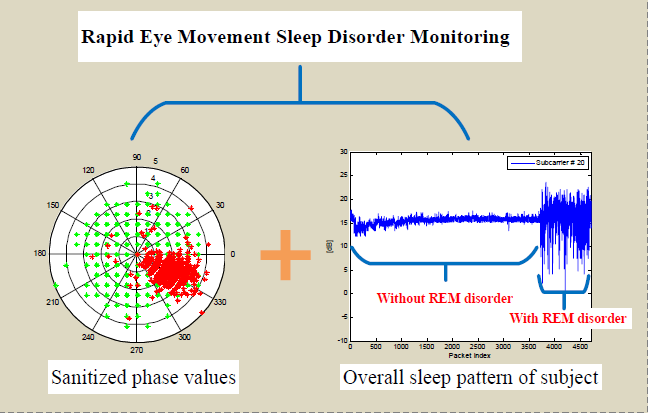
- REM Behavior Sleep Disorder is a serious, sometimes dangerous condition that causes people to “act out” their dreams; thus, monitoring and diagnosis of such disease are significant.
- This paper demonstrates the design and implementation of an innovative system for monitoring patients suffering from REM sleep behavior disorder.
- Continuous monitoring of RBD patients is crucial to prevent injury; the proposed identify RBD episodes with accuracy higher than 90%.
- The work leverages the finer-grained information to monitor patients suffering from RBD and fully exploits the amplitude and phase information.
2018 Original Research Paper
Monitoring of Patients Suffering from REM Sleep Behavior Disorder
Xiaodong Yang, Syed Aziz Shah, Aifeng Ren, Nan Zhao, Jianxun Zhao, Fangming Hu, Zhiya Zhang, Wei Zhao, Masood Ur Rehman, Akram Alomainy
Abstract:The Rapid Eye Movement (REM) Sleep Behavior Disorder (RBD) is a parasomnia that involves involuntary, unwanted and random movements of a dreaming patient.
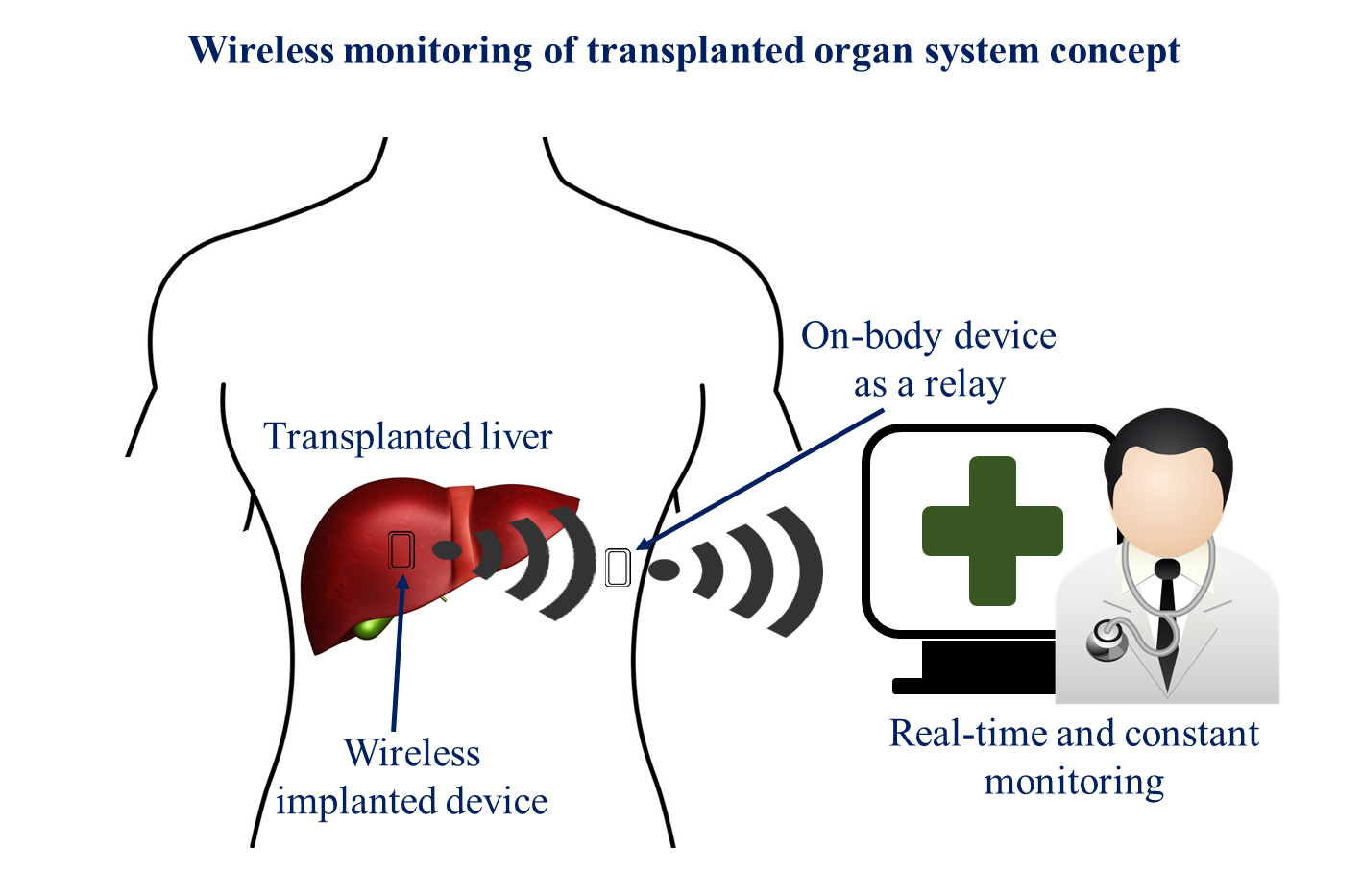
- This application utilizes wireless communication to transmit biological data from the transplanted liver to provide constant and real-time monitoring after transplantation.
- This work shows that it is feasible to establish wireless communication from the liver area to the body surface and thus to implement such intended applications in the described scenario using ultra-wideband (UWB) technology.
- The potential medical applications include wireless monitoring and diagnostics of internal organs of the human body as well as drug delivery at specific locations.
- This work offers, for the first time, the fundamental understanding of UWB channel characteristics at the liver location considering respiration-induced organ movements.
- With the potential utilization of ultra-wideband technology for liver implanted wireless communications, this would enable other future innovative healthcare applications.
2017 APS Special Issue
Channel Characteristics and Wireless Telemetry Performance of Transplanted Organ Monitoring System Using Ultra-wideband Communication
Pongphan Leelatien, Koichi Ito, Kazuyuki Saito, Manmohan Sharma, Akram Alomainy
Abstract:Recently, wireless implanted applications have attracted considerable interest in the medical domain due to their capability to offer healthcare sensing and monitoring.
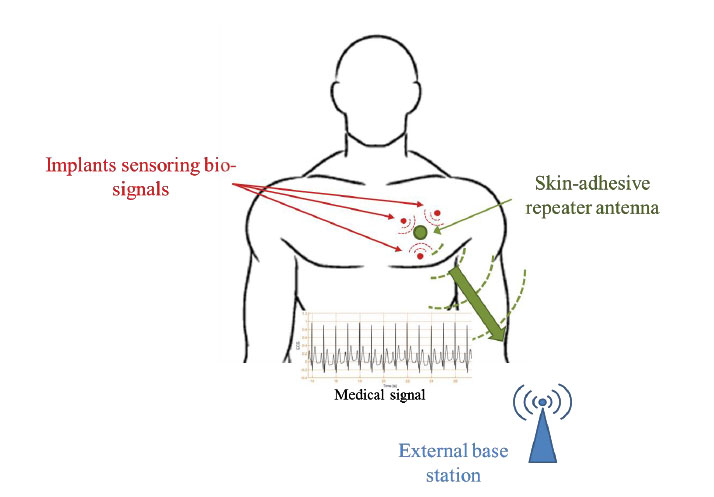
- We assess the viability of having a dual-band skin-attached repeater antenna for in- and off-body communication for the transmission of medical data in the context of Body Area Networks. It is the first time a single-port antenna with both ISM (2.4 GHz) and UWB (4-10.6 GHz) operation bands is proposed for BAN applications.
- The study demonstrates the implementation of a skin-adhesive antenna and the feasibility of both in- and off-body communication links with a passive implant and an external base station, respectively.
- The proposed repeater antenna can be used in continuous monitoring applications, in order to detect health conditions in advance.
- We study for the first time the possibility of having a skin-attached repeater antenna with capability of establishing an in-body communication link with multiple implants and further relay the collected information through a UWB off-body link, thus increasing the off-body communication range and also diminishing the transmission time.
- The present paper includes the complete study of the in- and off-body links not only in the time-domain, in which we transmit a QPSK-modulated ECG signal, but also in the frequency-domain, where we assess the power transfer and link budget.
2018 Original Research Paper
Dual-Band Skin-Adhesive Repeater Antenna for Continuous Body Signals Monitoring
Joao Felicio, Carlos A. Fernandes, Jorge R. Costa
Abstract:We present a 35-mm diameter skin-adhesive antenna intended to operate as a gateway to relay the low power signals from a sensor implanted in the body to an external base station (BS).
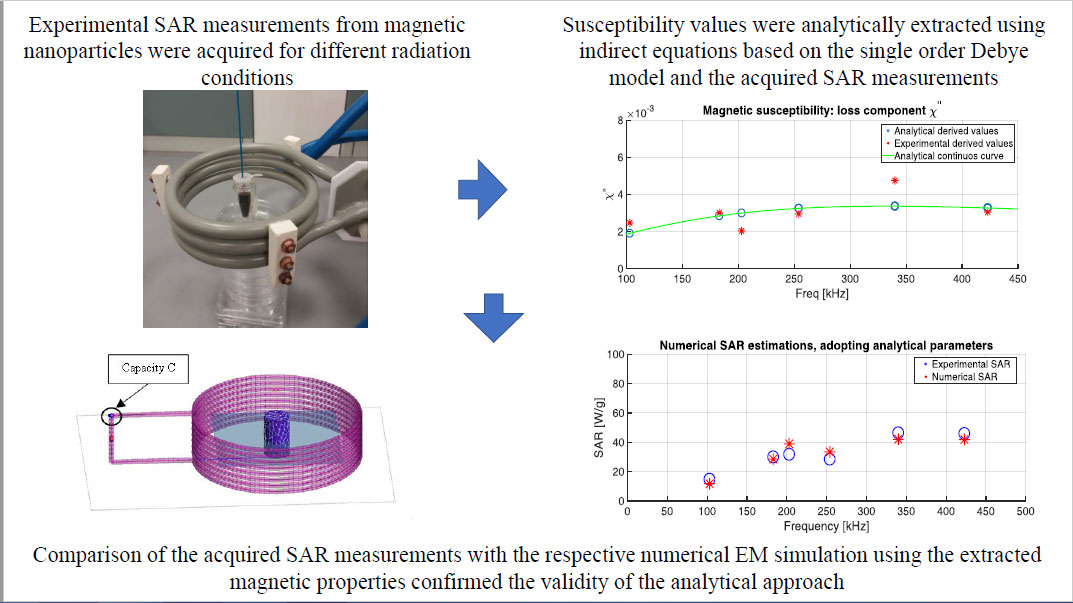
- A novel approach able to deeply optimize clinical treatments of magnetic hyperthermia with nanoparticles.
- Innovative determination of the complex magnetic permeability of magnetic colloidal fluid by simply using in
vitro SAR measurements. - A rapid, alternative and broadband approach for determining the electromagnetic properties of magnetic
nanoparticles. - Possibility to test the efficiency of nanoparticles in a tissue-like environment: optimized and realistic
treatment planning for magnetic hyperthermia.
2018 Original Research Paper
A Novel Approach for Determining the Electromagnetic Properties of a Colloidal Fluid with Magnetic Nanoparticles for Hyperthermia Applications
Danilo Brizi, Nunzia Fontana, Giulio Giovannetti, Alessandra Flori, Luca Menichetti,Saer Doumett, Giovanni Baldi, Agostino Monorchio,
Abstract:The paper presents a general analytical method for evaluating the magnetic properties of colloidal fluid with magnetic nanoparticles and agar through in vitro Specific Absorption Rate (SAR) measurements.

- We have used our microwave-imaging system in order to successfully reconstruct the Supelec-breast phantom and evaluate its usability.
- Our system is capable of recover images of the studied phantoms, although the interior of the Supelec phantom is challenging due to the high plastic content.
- The studied phantom was developed to be a tool within the microwave-imaging community.
- These are the first published reconstructed images of the Supelec phantom and shows that the phantom is a useful tool when developing a microwave-imaging system.
- It is also shown that our system is capable of reconstructing an image of the phantom without utilizing any a priori information of the phantom, which is unique in the microwave-imaging community.
IMBIOC 2017 Special Issue
A First Evaluation of the Realistic Supelec-Breast Phantom
Tomas Rydholm, Andreas Fhager, Mikael Persson
Abstract:A microwave tomographic system is used to evaluate the realistic breast phantom developed at the Supelec institute.
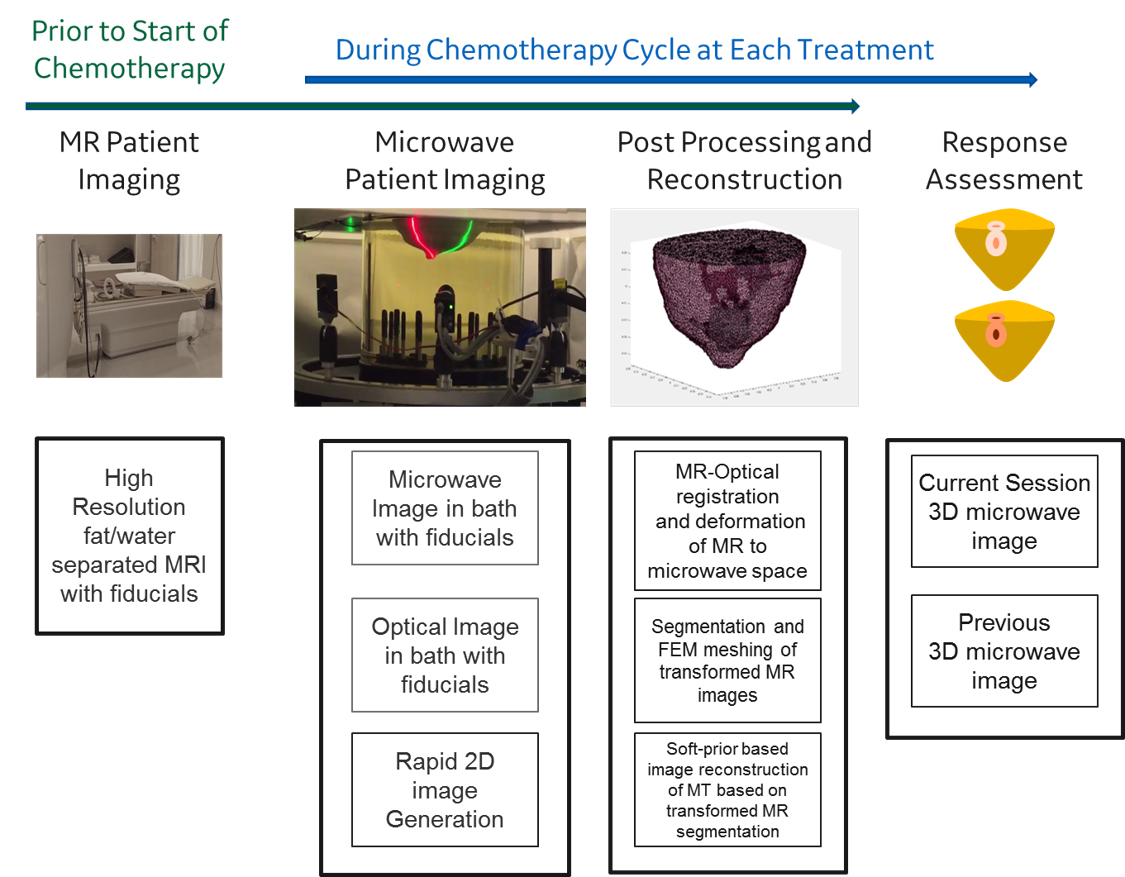
- To achieve increased resolution and specificity in microwave imaging reconstruction a soft prior regularization can be used from pre-microwave imaging MRI performed as part of standard clinical care for breast cancer.
- The targeted application is breast cancer imaging for neoadjuvant chemotherapy monitoring.
- Utilizing a limited set of skin fiducial markers numerical algorithms have been developed to warp the original breast MR images into a geometry closely resembling that for when the breast is pendant in the microwave system.
- Leveraging magnetic resonance images acquired prior to neoadjuvant chemotherapy a soft prior regularization of the microwave imaging can be performed to increase resolution and specificity thus potentially improving the ability of the oncologist to predict chemotherapy effectiveness.
IMBIOC 2017 Special Issue
Image Registration for Microwave Tomography of the Breast Using Priors from Non-Simultaneous Previous Magnetic Resonance Imaging
Gregory Boverman, Cynthia Davis, Shireen Geimer
Abstract:Microwave imaging is a low-cost imaging method that has shown promise for breast imaging and, in particular, neoadjuvant chemotherapy monitoring.

- Electromagnetic sensing system for dielectric characterization of liquid samples and individual
biological cells. - Simultaneous quantitative evaluation of dielectric permittivity at two different frequencies.
- Vision: non-destructive characterization of cell cultures in a culture medium prior or parallel to
medical treatment. - Highly sensitive characterization of picoliter sample volumes.
- Biocompatible and disposable microfluidic chip for handling of cell suspensions and positioning
of individual cells.
Original Research
Resonant Microwave Sensors for Picoliter Liquid Characterization and Non-Destructive Detection of Single Biological Cells
Nora Meyne, Grischa Fuge, An-Ping Zeng
Abstract:The non-destructive characterization of small liquid volumes as well as the detection of single biological cells can lead to new insights for biomedical and biotechnological applications.

- The level of MRI coil detuning and blocking is strongly dependent on the resistance of the control device which can change due to device heating
- More robust circuitry and understanding of both the electrical and thermal operation of the devices (and their interplay) will lead to more reliable MR instrumentation.
- The targeted medical application is MRI receive coil detuning/blocking circuits to protect the patient and the sensitive electronics in the presence of the high power slice-select pulse.
- The ability to model the control device’s thermal characteristics will lead to improved understanding of circuit operation, aid in the selection of control device for the specific MR application, and will lead to more reliable MRI instrumentation.
IMBIOC 2017 Special Issue
Control Device Thermal Modeling in MRI Receive Coil Q-Spoiling Circuits
Robert H. Caverly, Savannah Benbrook
Abstract:Q-spoiling circuits for detuning receive coils during high power MRI slice-select pulses protect both sensitive electronics as well as the patient from undesired high energy signals and associated heating.
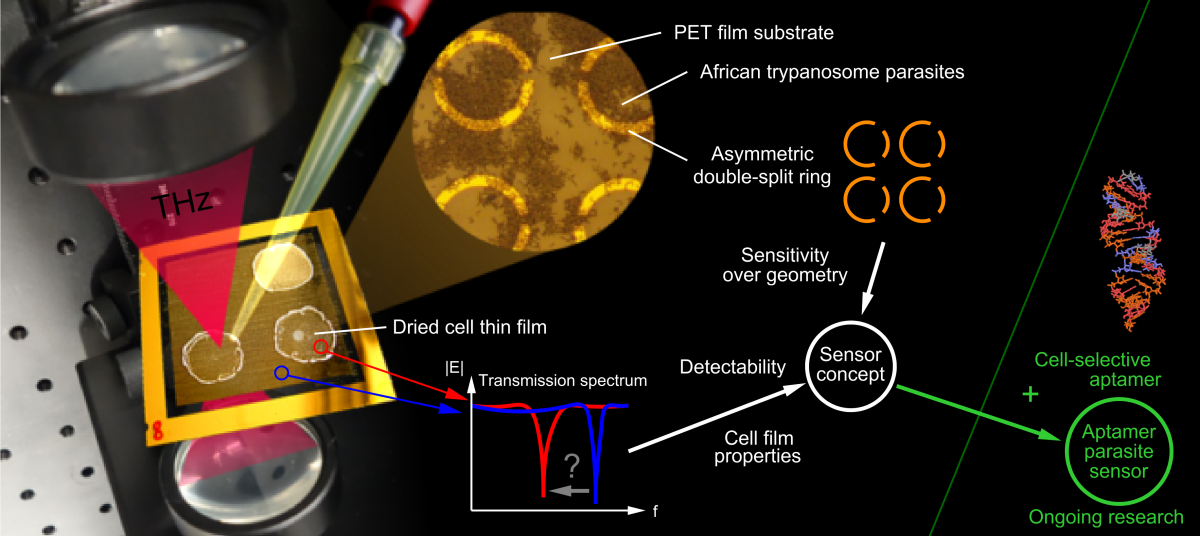
- In this work, the detectability of African trypanosome parasites through passive resonant thin film sensing is
examined for the first time, providing the basis for a novel approach to fast pathogen screening tests targeting
Human African Trypanosomiasis (HAT). - Cell-film sensitivity of asymmetric double-split rings is evaluated in simulation over different gap and film
configurations, using the material characterization presented in the original conference paper as a data basis. - Simulation results are verified using phantom material and actual trypanosome parasites in pure form, while
also examining the influence of varying dielectric contrast to dry cell buffer residue. - The observed significant and rapid detectability of pure trypanosome parasites as a bulk material using planar
resonators is a very important intermediate result on the way to a surface-functionalized parasite sensor, which
achieves high selectivity by use of RNA-based, highly affine and parasite-specific aptamer coatings. - In ongoing research, we hope to achieve a sensor design which can immediately detect parasite presence in a
barely pre-treated patient fluid sample based on the selection function of the aptamer, but possibly also by
spectroscopic recognition of the cell itself if an individual spectral feature can be found in future work.
IMBIOC 2017 Special Issue
Detection of African Trypanosomes using Asymmetric Double-Split Ring based THz Sensors
Mario Mueh, Matthias Maasch, Robert Knieb, H. Ulrich Goringer, Christian Damm
Abstract:A THz probe beam interrogates a sample slide ontaining an array of asymmetric double-split ring resonators loaded with African trypanosome cells in different media,

- An innovative multi-frequency hyperthermia treatment planning strategy addressing the limiting
clinical need represented by minimizing undesired heating is presented. - This multi-frequency planning strategy, mf-FOCO, based on a convex programming problem, ensure
a safe and efficient outcome of the treatment. - The targeted medical application is hyperthermia treatment planning.
- Preliminary results confirmed the possibility of counteracting undesired heating exploiting multifrequency
applicator while enforcing a patient-specific mask.
IMBIOC 2017 Special Issue
Multi-Frequency Constrained SAR Focusing For Patient Specific Hyperthermia Treatment
Gennaro G. Bellizzi, Lorenzo Crocco, Giada M. Battaglia, Tommaso Isernia
Abstract:In hyperthermia treatments, the possibility of generating a specific absorption rate distribution peaked into the tumor and bounded elsewhere represents the main clinical need.
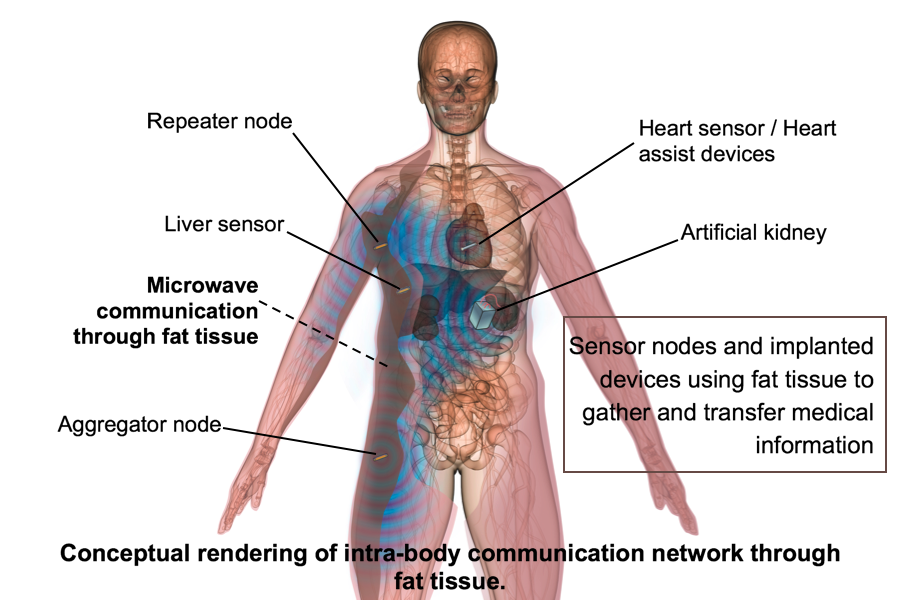
- We propose a novel channel for supporting high data rate microwave communication by using the fat tissue.
- For up to 10 cm long fat tissue channel, we were able to achieve approximately 96 % data packet reception
with a path loss of 1 dB and 2 dB at 10 mm in both phantom and ex-vivo environments, respectively. - This work can be used in body area network, sensors application, and man-machine interfaces.
- Microwave communication through fat tissues was not known before. This work was successfully able to
demonstrate data packet transmission through the porcine fat tissue. - Through this study, we were able to show that the transmission loss (dB) in the muscle layer is more than twofold
of the transmission loss (dB) through the fat layer.
IMBIOC 2017 Special Issue
Data Packet Transmission through Fat Tissue for Wireless Intra-Body Network
Noor Badariah Asan, Carlos Pérez Penichet, Syaiful Redzwan, Daniel Noreland,Emadeldeen Hassan, Anders Rydberg, Taco J. Blokhuis, Thiemo Voigt, Robin Augustine
Abstract:This work explores high data rate microwave communication through fat tissue in order to address the wide bandwidth requirements of intra-body area networks.
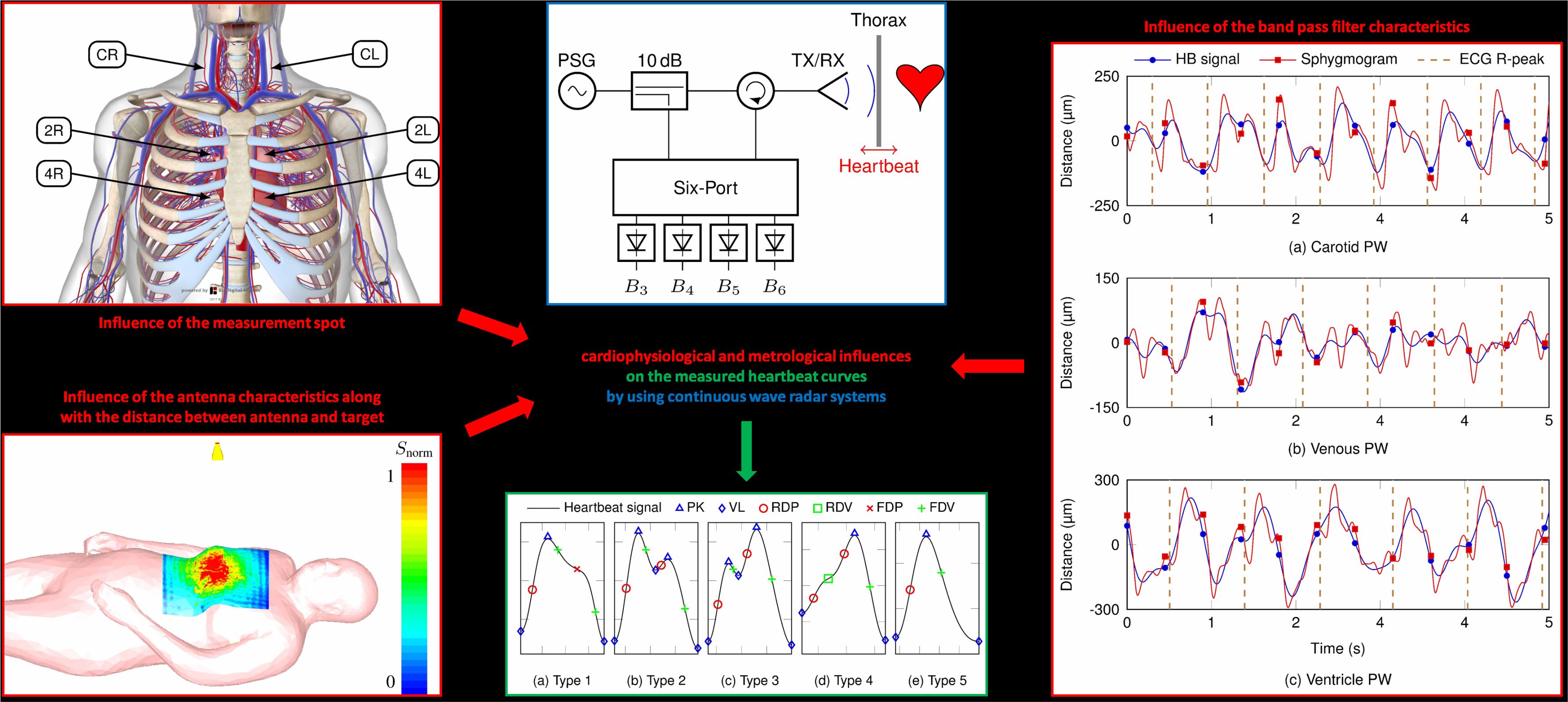
- For the first time, detailed cardiophysiological and metrological causes of the diversity of measured heartbeat curves by continuous wave radar systems are presented as well as the possibility to measure locally specific pulse wave curves called sphygmograms.
- The measurement spot on the human body, the cutoff frequencies of the applied band pass filter, the antenna characteristics as well as the distance between antenna and target contribute to the signal shape of the measured heartbeat curves.
- Radar based locally specific pulse wave detection enables novel, contactless, cardiophysiological investigations for medical diagnostics.
- The causes of the diversity of published heartbeat curves are researched by investigating the cardiovascular system and the metrological influences on the measured signal shapes. Hereby, it is shown that adjusted filter characteristics and an appropriate distance between antenna and target enable radar based measurements of locally specific and medically relevant sphygmograms.
- The presented measurements were verified by a laser sensor as gold standard and medically substantiated by cardiophysiological researchers.
IMBIOC 2017 Special Issue
Local Pulse Wave Detection using Continuous Wave Radar Systems
Christoph Will, Kilin Shi, Sven Schellenberger, Tobias Steigleder, Fabian Michler, Robert Weigel, Christoph Ostgathe, Alexander Koelpin
Abstract:The red boxes illustrate the cardiophysiological and metrological influences on the measurement signal which are researched in this paper.

- For the first time in literature, deep tissue implanted antenna radiation efficiency is accurately measured inside a tissue mimicking liquid phantom using a Reverberation Chamber (RC) technique.
- Although the radiation efficiency of a deep tissue implanted antenna can be extremely low (< 0.1%), this work shows how the RC technique can be used if care is taken to ensure that the feed cable does not significantly radiate, for example by routing the cable through the bulk of the tissue mimicking phantom.
- This work is relevant to any biomedical application or solution that is based on active implants that employ UHF radio communications or power transfer since in-situ radiation efficiency is the key design metric for such antennas and is core to the system link budget.
- In addition to establishing a method of efficiently and effectively measure implant antenna efficiency, something that is avoided in most published research papers, this work shows that significant errors are introduced when the antenna under test feed cable is not deeply inserted in the tissue phantom.
To isolate the effect of the cable, different experimental setups were arranged, tested and analyzed where the position of the antenna changes with respect to the boundaries of the tissue-mimicking liquid phantom and to ensure the generality of our results, we conducted our experiments using a range of antennas with differing radiation characteristics.
Original Research Paper
Measurement of Deep Tissue Implanted Antenna Efficiency Using a Reverberation Chamber
Yomna El-Saboni, Matthew K. Magill, Gareth A. Conway, Simon L. Cotton, William G. Scanlon
Abstract:We investigate the use of a reverberation chamber for the experimental measurement of deep implant antenna radiation efficiency.
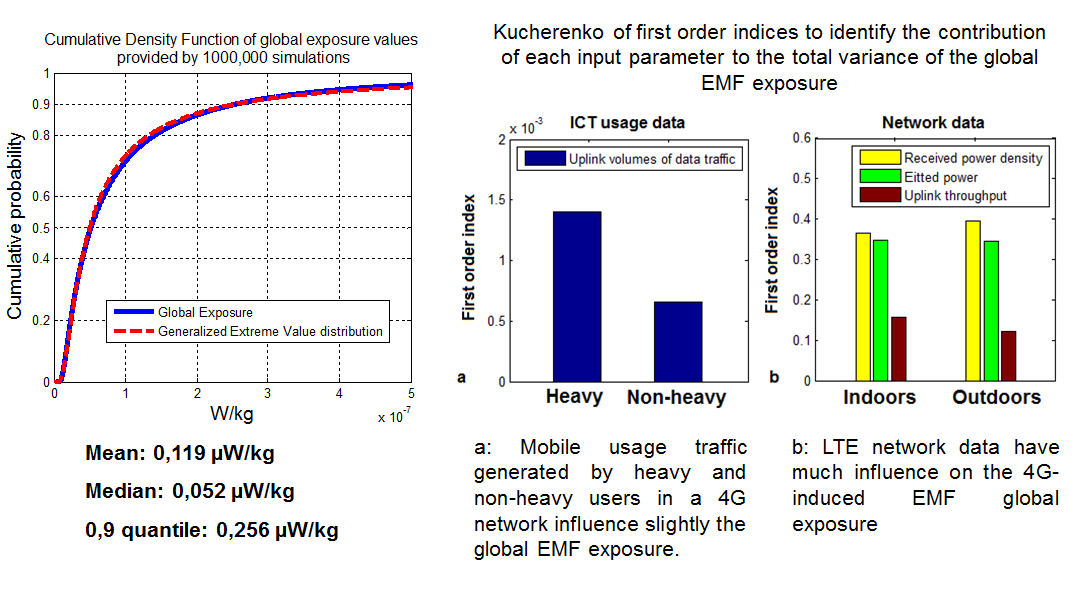
- We propose a simplified method based on surrogate modeling to assess the day-to-day global RF-EMF exposure of a population, which offers us a fast analysis of the evolution of wireless networks in view of EMF exposure.
- The RF exposure from mobile phones accounts for only 25% of global exposure, resulting from the high speed of uplink throughput in 4G, considering a mobile usage in data service used in front of the chest.
- This is the first study to characterize the uncertainty of day-to-day RF-EMF exposure of a population taking into account the variability linked to geographical environment specificities, communication traffic, EM radiations originating from personal wireless devices and from base stations as well as data rates; the novelty of this paper is also in its sensitivity analysis in order to assess the influence of these parameters on RF-EMF exposure.
- Results show that the 4G-induced RF-EMF exposure of a population follows a Generalized Extreme Value distribution with an average value of 1.19x10-7 W/kg, which is far below the international standard limits.
Original Research Paper
Simplified Assessment Method for Population RF Exposure Induced by a 4G Network
Yuanyuan Huang, Joe Wiart
Abstract:This article presents a simplified method, based on surrogate modeling, to evaluate the day-to-day global population exposure to radio frequency (RF) electromagnetic fields (EMF) induced by a 4G network,

- This paper provides a critical and analytical synopsis and assessment of the current status of research on cancers in rats
exposed lifelong to RF and microwave radiation. - There were 18 carcinogenic and co-carcinogenic investigations in rats exposed to RF and microwave radiation
from a diverse range of mobile and wireless communication devices and systems. - A recent U.S. government announcement that rat cancer results from its large RF animal health risk study is
an important occurrence. - The impact of RF exposure on carcinogenesis remains tentative. The discrepancies continue to pose
uncertainty in assessing public health hazards from RF radiation. - The question of whether RF exposure from wireless and mobile devices and systems poses a health risk would
likely remain equivocal and controversial for some time to come.
Review Paper
Cancer Occurrences in Laboratory Rats from Exposure to RF and Microwave Radiation
James C. Lin
Abstract:Health effects of radio frequency (RF) and microwave radiation have been a subject of scientific inquiry and public interest of late because of widespread global usage of mobile communication devices by billions of people everywhere.
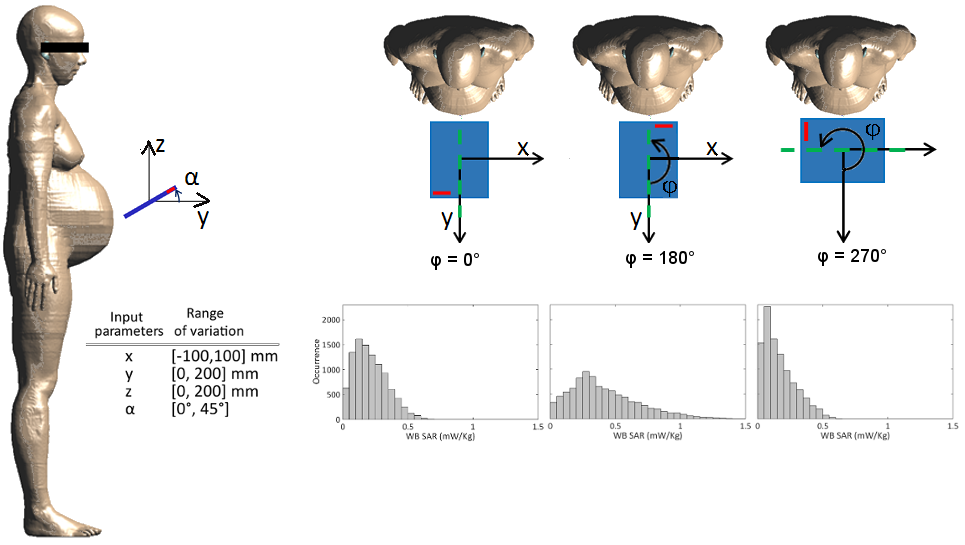
- The innovative approach of stochastic dosimetry was used to assess the fetal exposure to a 4G LTE tablet in
realistic scenarios - Fetal exposure in terms of Specific Absorption Rate (SAR) was within the limits of the ICNIRP 1998 general
public Guidelines in all the scenarios, and the position of the tablet was very influential on the exposure. - The targeted biological application is the evaluation of the level of fetal exposure to new generation devices
RF-EMF, taking into account the variability of realistic exposure scenarios. - This work expands the knowledge of the fetal exposure to RF-EMF, obtaining a complete description of the
level of exposure in all the possible positions of the tablet. - Stochastic dosimetry was confirmed to be a powerful tool to evaluate the influence of the variation of the
input parameters in a realistic exposure scenario
Original Research Paper
Assessment of Fetal Exposure to 4G LTE Tablet in Realistic Scenarios: Effect of Position, Gestational Age and Frequency
Emma Chiaramello, Marta Parazzini, Serena Fiocchi, Paolo Ravazzani and Joe Wiart
Abstract:The continuous development of Radio-Frequency (RF) devices used in every-day life highlights the need of conducting appropriate health risk assessment due to Radio- Frequency Electromagnetic Fields (RF-EMF) exposure, especially for the fetal exposure in realistic scenarios.
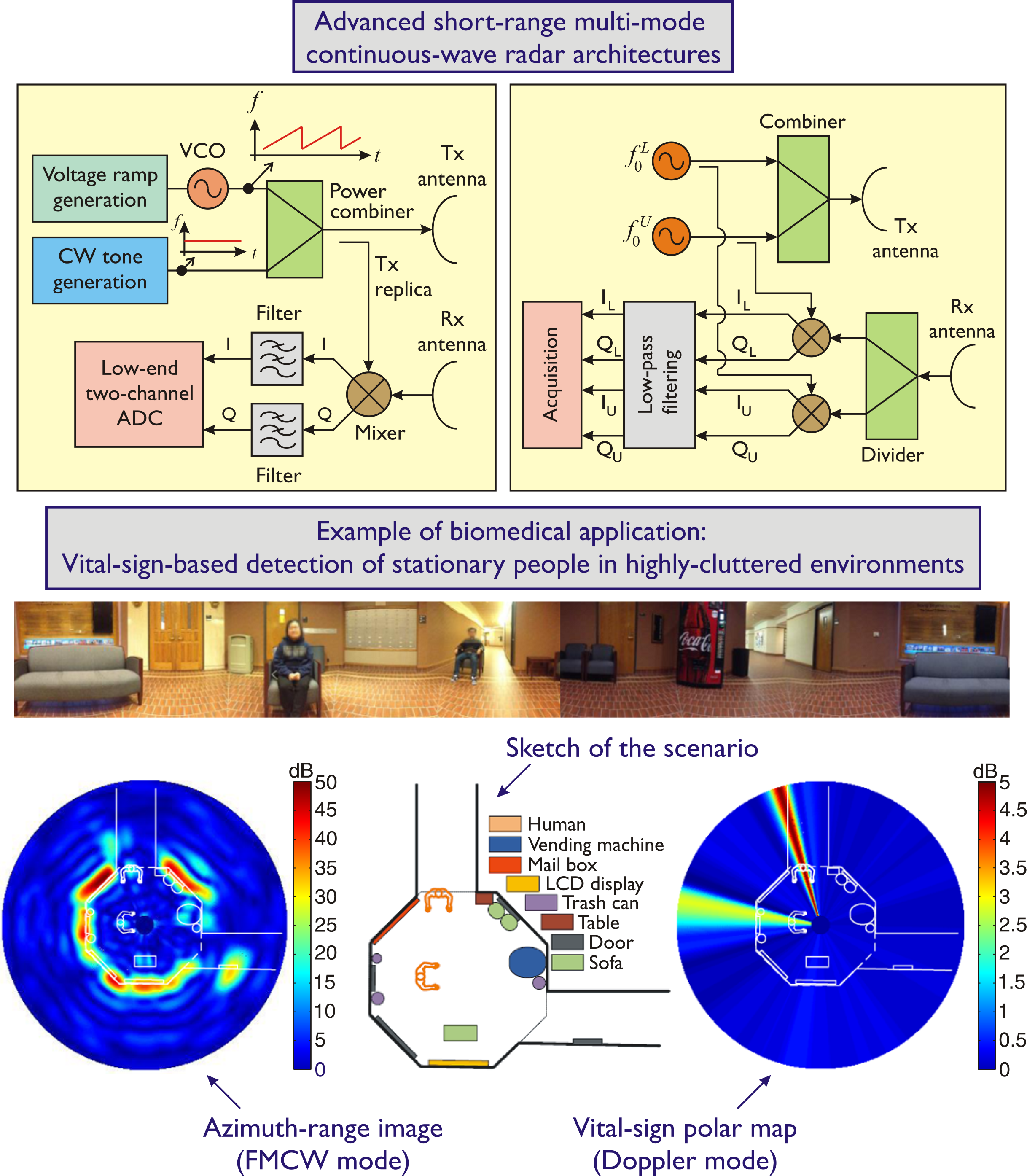
- Short-range radars can be effectively applied in biomedical/healthcare environments, such as monitoring of
vital signs or detection of fall incidents of elderly at home. - Advanced short-range multi-mode radars have improved features for biomedical/healthcare applications.
Applications of advanced short-range multi-mode radars range from monitoring of vital signs to humanaware
localization scenarios. - The proposed hybridizations of the Doppler and frequency-modulated continuous-wave (FMCW) operation
modes leads to minimum-hardware radar architectures with advanced features for biomedical/healthcare
applications. - Theoretical analyses and simulations for the Doppler-plus-FMCW, multi-FMCW, and tone-ranging-inspired
radar architectures are provided
Review Paper
Review on Advanced Short-Range Multi-Mode Continuous-Wave Radar Architectures for Healthcare Applications
José-María Muñoz-Ferreras, Zhengyu Peng, Roberto Gómez-García and Changzhi Li
Abstract:Short-range radar systems are non-contact devices that are attracting much attention from the RF/microwave community. In particular, they are starting to be applied in healthcare contexts,

